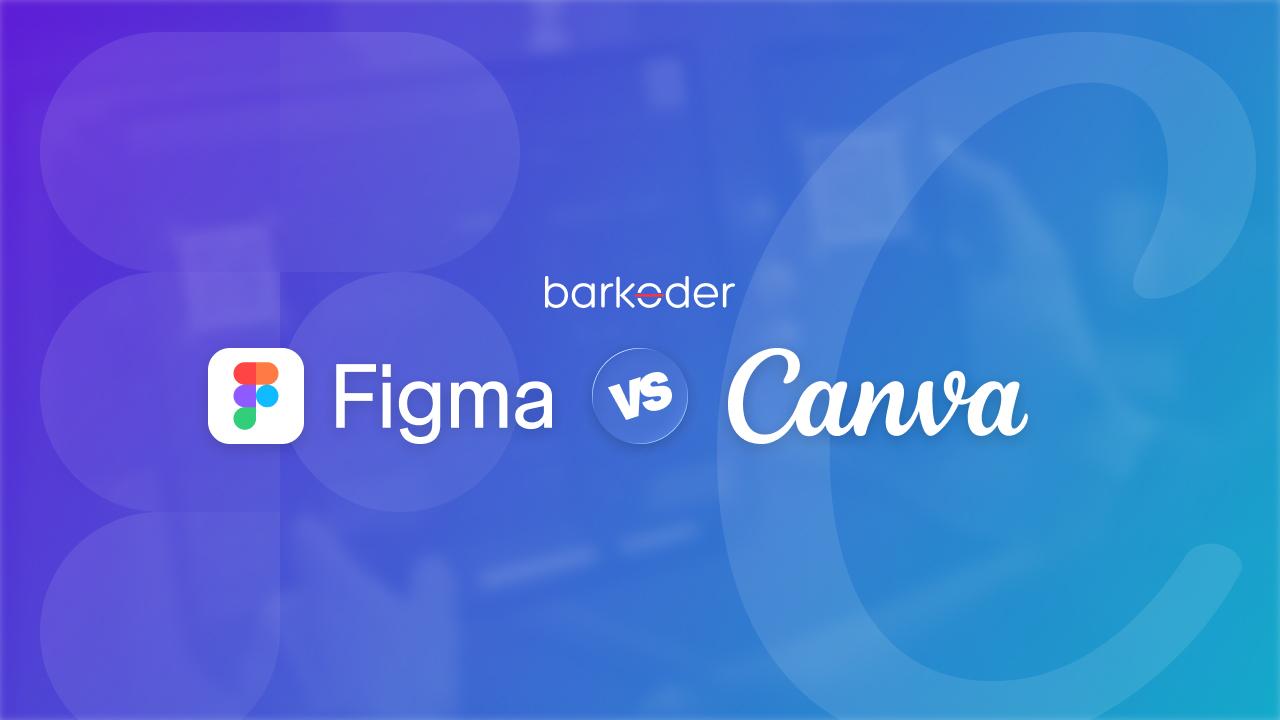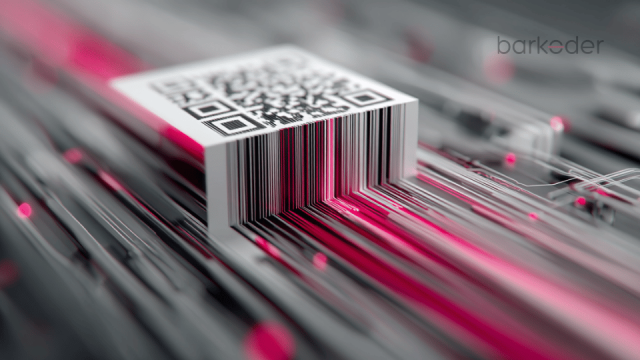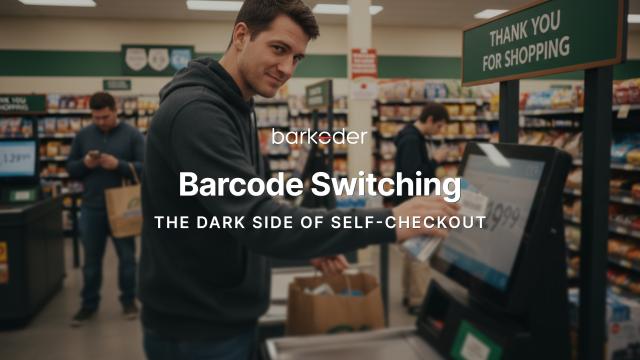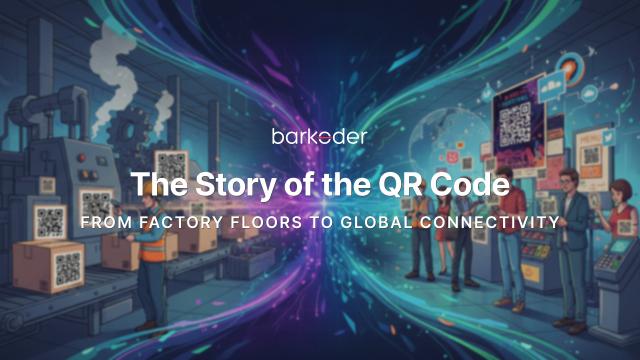
Figma vs. Canva in 2025: The Ultimate Comparison
Short Info / Teaser
In 2025, two design giants — Figma and Canva — continue to dominate the creative space, but they serve different purposes. Figma is the go-to platform for UI/UX designers, developers, and product teams, offering precise control, real-time collaboration, and integration with development workflows. Canva, on the other hand, is a powerhouse for marketing, branding, and content creation, enabling teams to quickly produce stunning visuals without heavy design expertise.
For barcode-focused businesses — whether you’re creating app interfaces, onboarding screens, marketing banners, or explainer visuals — understanding how these tools differ can help you choose the one that fits your workflow best.
Figma excels at designing functional interfaces for scanning apps: think camera overlays, scanning animations, and user interaction flows that need pixel-perfect precision. Canva shines when it comes to promotional assets — from App Store screenshots and social media visuals to presentation decks and product demos that showcase how barcode scanning works.
The right choice often depends on your team’s structure and goals. If your focus is product experience and developer collaboration, Figma offers unmatched scalability. If your priority is speed, simplicity, and visual communication, Canva’s drag-and-drop ecosystem might be the smarter pick.
Ultimately, the combination of both tools can unlock the best of both worlds — Figma for product design and Canva for marketing storytelling — creating a consistent, professional image across every touchpoint.
Introduction
Every product needs visuals — whether it’s marketing banners, user interface mockups, or technical documentation. Visuals are the first impression users get of your brand, and in the world of technology products, they communicate clarity, precision, and trust.
When your product is a barcode scanning solution like barKoder, the visuals you use matter even more. Barcode scanning is all about accuracy and efficiency — and that same precision should be reflected in your product design, marketing materials, and user communication. Whether you’re creating onboarding screens, developer guides, or promotional graphics, the images must be sharp, scalable, and consistent with your brand identity.and
Figma remains the go-to choice for designers, developers, and product teams who need full control over UI layouts, component libraries, and cross-platform design systems. It’s ideal for creating detailed user flows, barcode scanning UI mockups, and interactive prototypes that simulate the real in-app experience of scanning.
On the other hand, Canva is unmatched in its simplicity and speed for marketing teams, content creators, and educators. It’s perfect for designing marketing banners, social media visuals, and quick documentation assets that visually explain how to integrate or use barKoder’s SDK. Canva’s template-based approach allows for fast production while maintaining a polished, professional look.
When it comes to barcode scanning visuals, the choice between Figma and Canva often depends on who’s designing and what the goal is:
Use Figma when you’re working on product interface design, creating app screens, or developing a design system that needs precision, collaboration, and version control.
Use Canva when you need to produce marketing visuals, infographics, or quick guides — where speed, accessibility, and brand consistency are the main priorities.
At barKoder, both tools play a role in our creative workflow. Our design and product teams rely on Figma for building intuitive, visually aligned scanning interfaces, while our marketing and documentation teams turn to Canva for fast, scalable, and on-brand visual content.
No matter which tool you choose, the key is to ensure your visuals tell the same story as your product — fast, reliable, and user-friendly. After all, in a field built on precision, every pixel counts.
What Figma and Canva Offer (General Overview)
Figma
A professional-grade vector-based design and prototyping tool.
Excellent for UI/UX, interactive design, and collaborative development handoff.
Strong versioning, real-time collaboration, layout constraints, reusable components.
Canva
A drag-and-drop graphic design tool ideal for non-designers and marketers.
Comes with pre-built templates, stock images, and easy-to-use editing features.
Friendly for quick social media posts, banners, flyers, and visual assets.
Strengths and Limitations for Barcode Scanning Images
Let’s look at how each tool handles the specific demands of barcode scanning image design.
Figma — What It Does Well
Precision & Scalability
Barcodes (especially QR codes and Data Matrix) demand crisp vector rendering so they remain scannable at multiple scales. Figma’s support for vector components ensures no distortion.
You can embed barcode images or generate SVGs that scale cleanly.
Component-based Design & Consistency
You can create reusable components (e.g., a branded barcode card, scan guides, overlays) and maintain consistency across different visual assets.
Apply constraints so barcodes reposition automatically in responsive UI layouts.
Design-to-Developer Handoff
Figma supports developer inspection, code snippets, and exporting assets, which is useful when your barcode UI needs to be integrated into apps.
Designers and product engineers can stay in sync.
Versioning & Collaboration
Real-time collaborative editing, comment threads, version history — great for teams working together.
You avoid multiple file versions floating around.
Prototype & Interaction
You can build interactive prototypes showing how the barcode scanner UI will behave — e.g. overlays, animations, scan confirmation screens.
6. Limitations of Figma
Steeper learning curve, especially for non-designers.
Some image manipulation features (filters, advanced photo adjustments) are limited or require external tools.
Requires a paid plan for larger teams or advanced features.
Canva — What It Does Well
Ease & Speed
Ideal for creating marketing visuals, banners, flyers, social posts quickly without needing deep design skills.
Templates and drag-and-drop make it fast for non-designers.
Built-in Assets
Access to stock photos, icons, shapes, and design elements, which can help you build visual layouts around barcode images.
You can insert barcode PNGs or exported images into templates easily.
Accessibility for Non-Design Teams
Marketing, sales, or support teams can adjust visuals themselves without the design department's help.
Limitations of Canva
Not ideal for interactive prototypes or UI workflows.
Vector editing is limited; exporting crisp vector barcode images might be constrained.
Hand-off to developers is weaker: you don’t get inspection tools or code snippets.
Over time, design consistency might suffer if many non-designers make edits.
Use Cases: When to Use Figma vs. Canva for Barcode Images
| Scenario | Best Tool | Why |
|---|---|---|
| Designing mobile app screens involving barcode scanning UI | Figma | You need precision, components, prototyping, and handoff |
| Creating marketing banners with a barcode image | Canva | Simple and fast for non-designers |
| Branding a set of barcode cards or business collateral | Figma | Maintain consistency with component systems |
| Social media post with a QR code | Canva (or Figma too) | Canva is quick; Figma works if design-savvy |
| Rapid tweaks by non-design teams | Canva | Easier for non-designers to adjust visuals |
Tips for Designing Barcode Scanning Images (Regardless of Tool)
Always keep barcode modules (the black/white squares/lines) clear — avoid overlaying complex graphics that might interfere with scanability.
Use sufficient contrast (dark barcode on light background).
Export barcodes in high resolution or vector format (SVG/PNG 300+ dpi) to prevent blur.
Leave a quiet zone (margin) around the barcode so scanners can read correctly.
Test your exported images with real devices (iOS/Android) to ensure they scan reliably.
Verdict & Recommendation for barKoder
Given your product is a barcode scanning SDK/app, the ideal workflow often involves both tools in tandem:
Use Figma as your core design tool — for UI, prototyping, barcode overlays, developer handoffs, and building component libraries.
Use Canva for quick marketing collateral, social media graphics, blog visuals, and collateral where speed and ease for non-designers is key.
In 2025, leveraging both Figma and Canva together gives your organization a distinct advantage. This hybrid approach bridges the gap between product design and brand communication, allowing your visuals to stay unified across every touchpoint — from your SDK documentation to your app UI to your promotional content.
By combining Figma’s structure and precision with Canva’s speed and simplicity, you achieve the perfect balance:
Consistency across product and marketing visuals
Efficiency in design and content creation
Flexibility for both designers and non-designers
For a product like barKoder, where precision, usability, and brand trust are essential, this dual-tool workflow ensures that every pixel — from your app interface to your marketing banner — speaks the same visual language.
Free Barcode Scanner
Use the tool below simply by uploading your image that contains the barcode.Our barcode scanner is a simple & completely free tool that you can use to scan various barcodes.
https://barkoder.com/free-barcode-scanner






